In Barcelona, Spain, a park originally designed to be a housing complex for the well-to-do, is a showcase for some of the most innovative and creative skills of a renowned architect known for his love of God and his love of nature.
Park Güell, a World Heritage Site, built from 1900 to 1914, was designed by Antoni Gaudí, a creative architect and part of the Catalan Modernisme movement, a movement that emphasized Catalan identity and, especially in the case of Gaudí, more organic forms than had been common. A dedicated Catholic, he held both nature and scripture as authoritative revelations of God's character and was serious about paying attention to both sources of revelation.
Park Güell integrates natural forms, patterns and structures in a way designed very specifically for its particular location, both the specific hillside it is built on and the larger Mediterranean locale it inhabits. It includes elements of extreme practicality as well as bright colors and whimsy, resulting in a space that meanders, delights, instructs and forms a cohesive whole of engineering, design, and beauty.
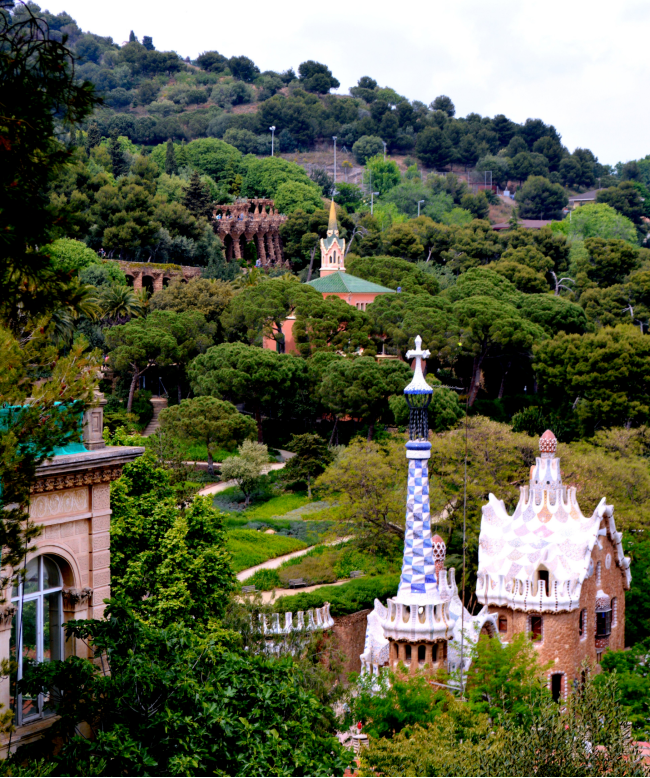
Inspired by nature
Antoni Gaudí, who initially worked in a Victorian artistic style, soon developed his own particular style and aestethics.
There are no straight lines or sharp corners in nature. Therefore, buildings must have no straight lines or sharp corners.
— Antonio Gaudi
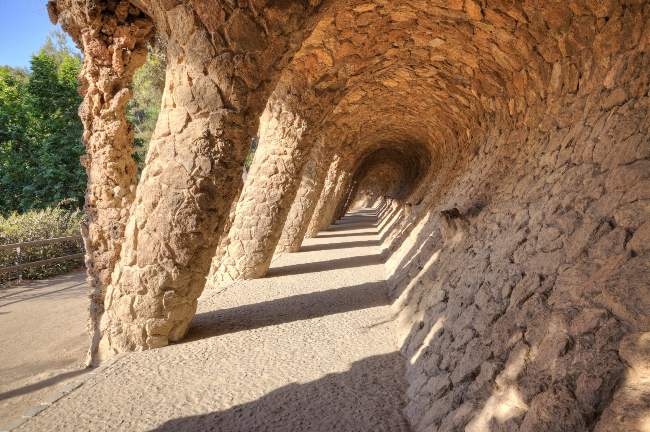
Nature was a standard and a reference point for Gaudí. He found inspiration for his work in the organic shapes and forms he saw in nature. The above picture shows a colonnade curved like an ocean wave coming to the shore which I find especially intriguing and would love to experience in person. Throughout the park, sculptures and structures mimic or incorporate animals, plants, and people, showing how Gaudí took his inspiration from the natural world to design his unusual creation. The columns which support the vault, for example, are modelled on trees, branching out from a single base like branches.
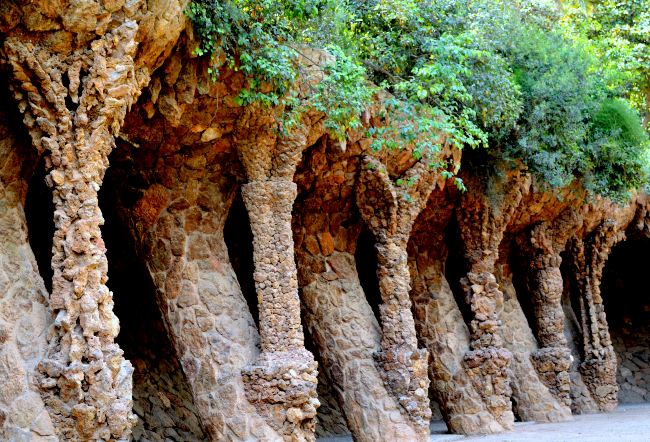
In additional to the flora and fauna shapes in his sculptures, he also incorporated the geometry and function of the natural world, including what he learned from the animals, plants and stars he studied. Gaudi's attention to the natural world went beyond the visual into the laws of mathematics, in particular geometry, and other principles that nature is constructed upon and Gaudí incorporated these into his work. Using geometry, he created structural solutions that broke new ground in architecture and became symbols of his organic style. The inverted caternary arch is one of these design elements. Gaudí saw perfection in nature and sought to replicate that perfection in his work.
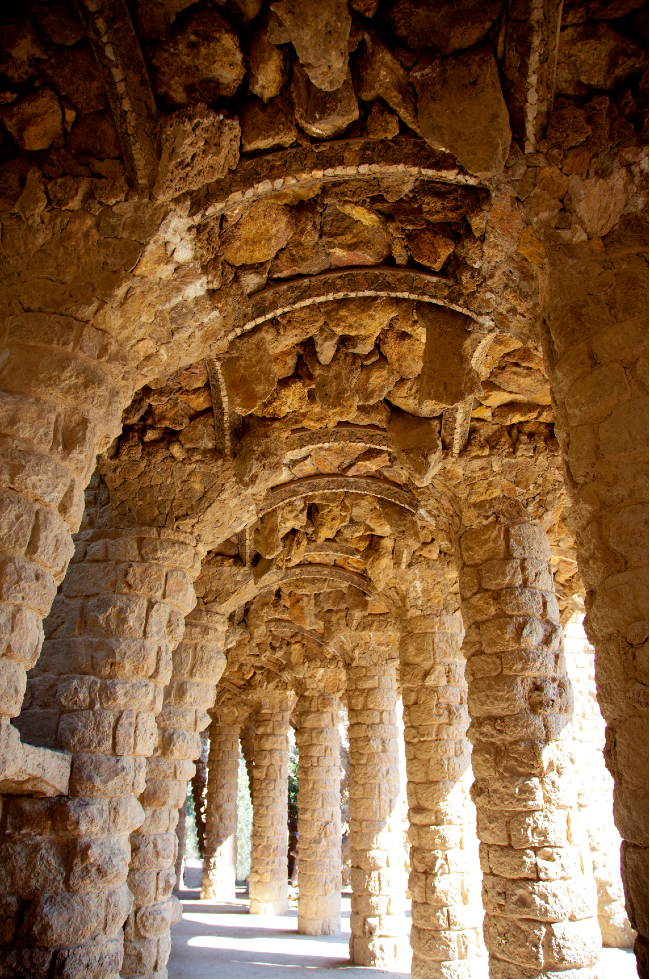
Gaudí's method of working was also very organic. Although he made initial plan drawings, he would figure out details as he went, using clay, rope, paper, and even plants, animals and humans as references to work out his plans three-dimensionally as the project progressed. Even this demonstrated his attention to the actual space he was working in—his plans changed as he adjusted to the reality of the physical place. I think it's sometimes easier to come in with plans and overlay them on top of whatever already exists rather than adjusting our plans to what is there.
Structure
In the the design of the park, he used the elements he found already present in the place: forms, curves, and stone. Gaudi designed the park to work with the natural environment on which it was situated, taking advantage of the mountain’s topography rather than fighting it or flattening it. He carefully studied the steep hillside (known at the time as Muntanya Pelada—bare mountain) which the development was to be built on. (It is now called Mount Carmel). It was a lovely location with wonderful views, fresh air, and plenty of sunshine, though it was also a little remote, which is part of what led to the demise of the housing scheme. Planning for around 60 building plots on the estate, Gaudí constructed a network of paths, viaducts and steps to provide access to the planned houses. The roadways were designed by Gaudí to jut out from the steep hillside or run on viaducts, with separate footpaths underneath these structures in arcades. This made the roads less intrusive and excavations were done carefully so as to minimize the impact on the landscape; local stone was used to integrate the structures into the hillside.
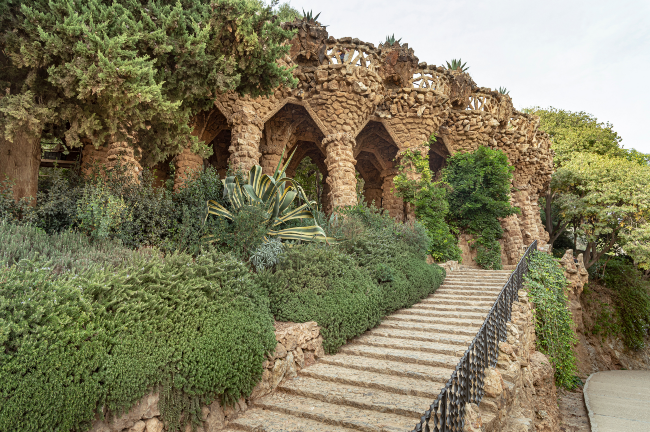
Another important underlying structural element of Park Güell is the system Gaudí created to accumulate rainwater. The main square, unpaved, acts as a filter for rainwater, which then seeps down through rocks, into 86 ingeniously hollow Doric columns that hold up the Hypostyle Hall.
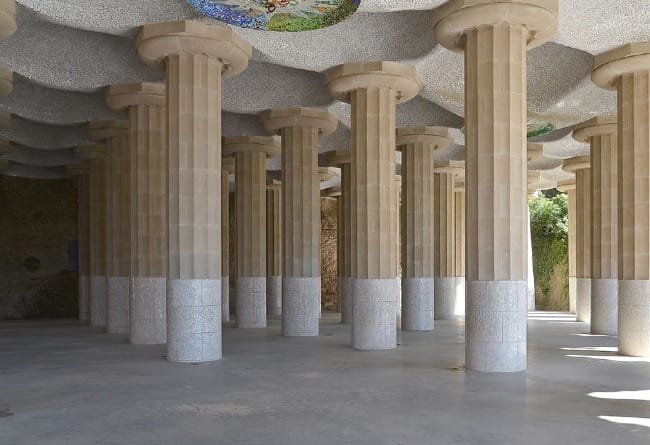
From there, the water funnels into a large underground cistern which is collected and used for irrigating the park. When the tank becomes too full, the overflow exits through the mouth of the dragon (or salamander) at the main entrance. Originally, this system was designed to supply the planned houses with clean, fresh, drinking water, but the water is now used for other purposes such as irrigation.
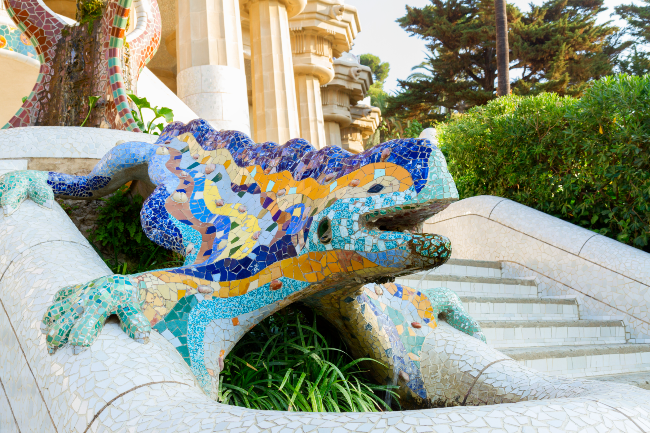
Flora
When Gaudí designed the park, he left the sparse vegetation that was already growing on the property, such as carob and olive trees, intact. When he brought in new plants, he chose Mediterranean species that required little water, including native species such as pine, cypress, fig, almond, plum, lavender, thyme, rockrose, sage, mimosa, and magnolia. The vegetation was lush, beautiful, and again, designed with practicality in mind.
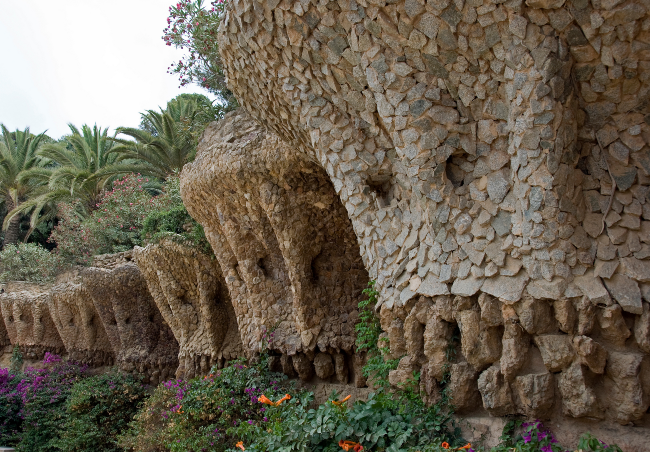
Fauna
A wide varity of wildlife inhabit the park, including non-native parrots which are found in the Barcelona area. Other birds such as the short-toed eagle can be found as well as hummingbird hawk moths—a creature which totally confused me when I saw one!
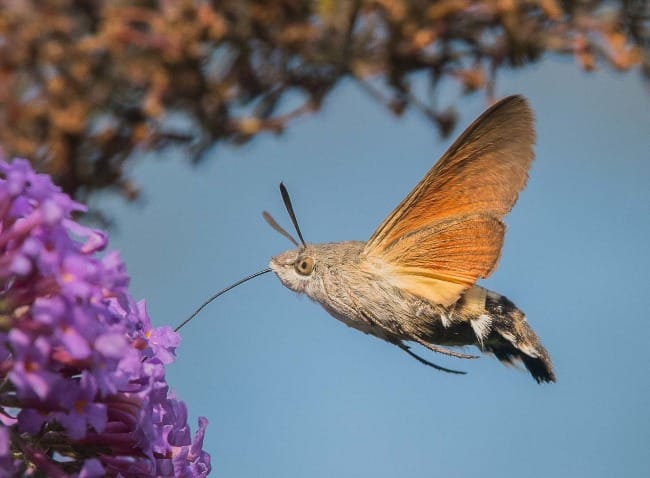
The park also has a gathering place for human activity, originally named the Greek Theater and renamed Plaça de la Natura (Nature Square). This is an area that was intended for large open-air shows that could be watched from the surrounding terraces. A long bench, twisting in the form of a sea serpent borders this area. The back of the bench is one of the most colorful and beautiful elements of the park art—a form of mosaic called trencadís created by broken ceramic pieces. Trencadís can be found throughout the park, including on the earlier-pictured salamander. The curving bench forms a series of enclaves, which create both a gathering spot and spaces for separation. Within the trencadís, there is a menagerie of colorful images from nature, mysticism, and poetry. Most of the work of the bench was overseen by Josep Maria Jujol, an important collaborator (and mentor) of Gaudí's.
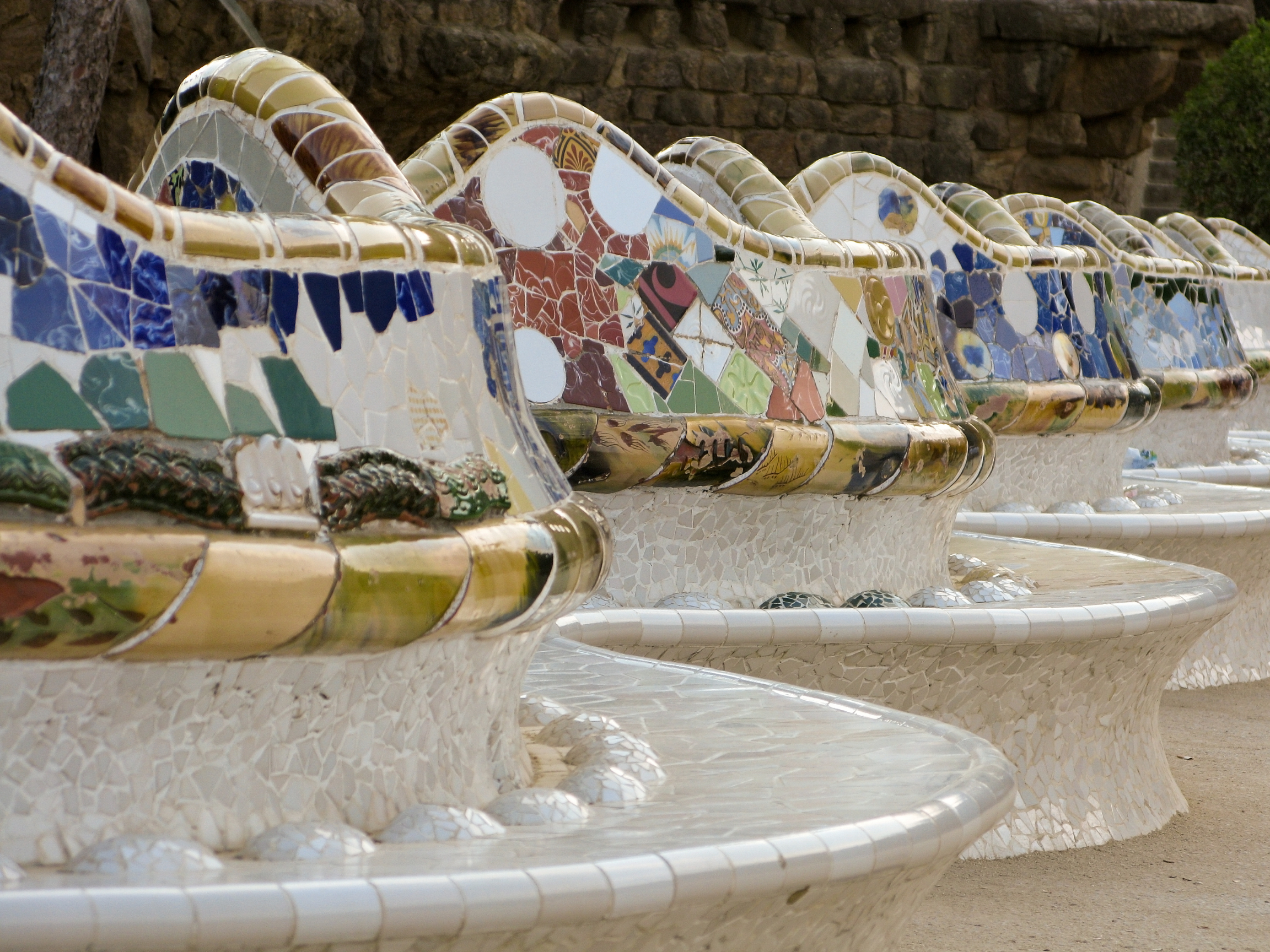
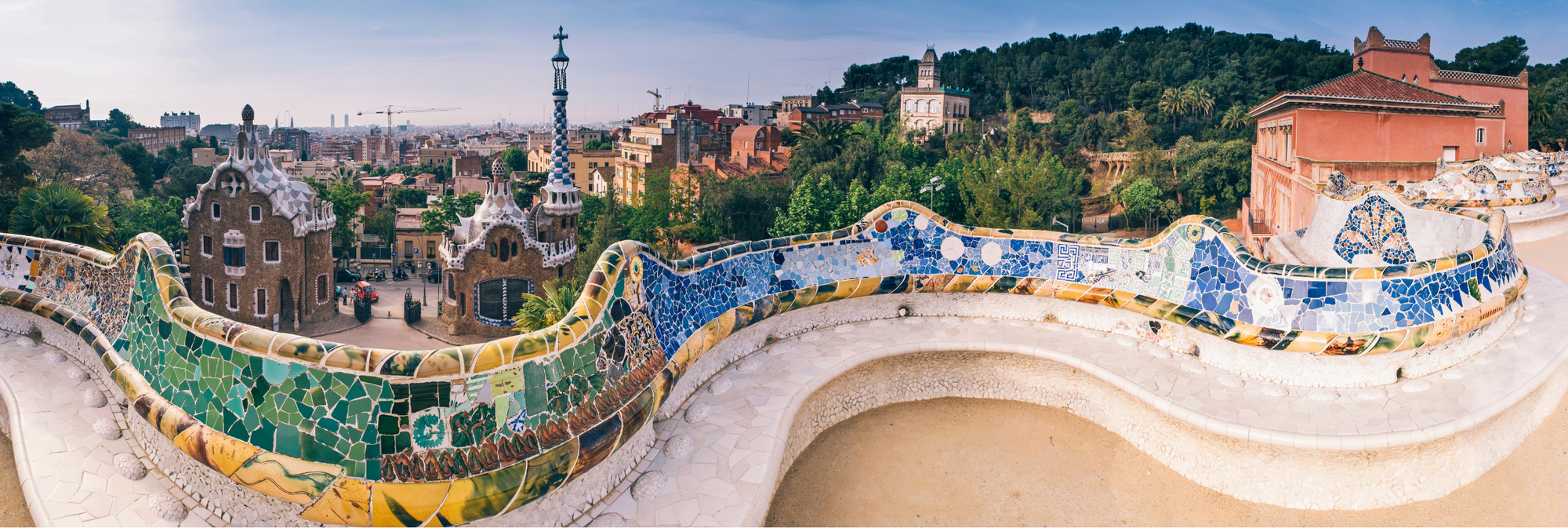
This space has provided a place for many Catalan traditions, such as sardana dances, and was used by local schools for PE and other classes, until tourism made these community uses less possible.
The highest point of the park features is a stone hill with steps leading up to a platform which holds three large crosses. The official name of this is "El Turó de les Tres Creus," however, many tourists choose to call it Calvary. This is, in a way, Gaudí's benediction of faith upon the park.
Barcelona holds many other examples of Gaudí's work, including what is considered by many to be his most significant work, The Sagrada Familia, which some consider to be a monstrosity and some consider to be genius because of the way it pushes Gaudí's ideas of natural forms even further.
Reflection Questions: Are there forms from the natural world that especially appeal to you? When you look at nature, what do you learn about God?
Louise
